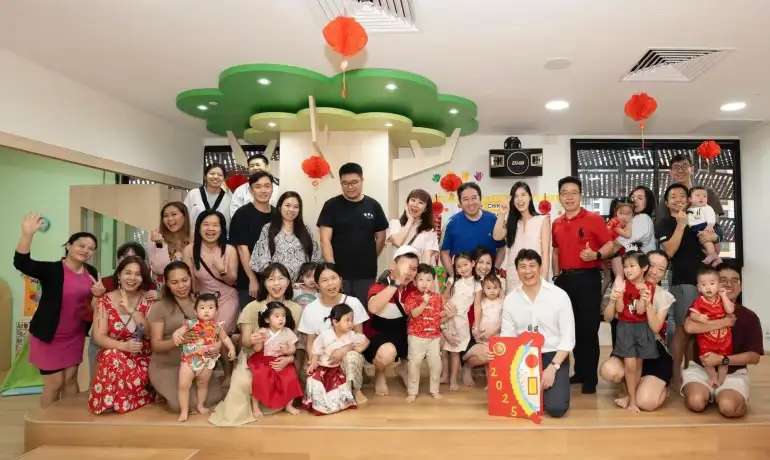Balancing work and family is never easy. Whether it’s dealing with a child’s sudden fever or needing time for school events, working parents often face moments where time off becomes essential. That’s why Singapore has policies that allow parents to take leave specifically for these situations.
But beyond what’s written in official documents, how does it really work? And what should parents watch out for in 2025?
What is Childcare Leave?
Childcare leave is a paid benefit for working parents to care for their young children. In Singapore:
- Parents of citizen children under 7 get 6 days of leave yearly.
- For kids aged 7 to 12, it’s 2 days.
- For non-citizen children, the entitlement is 2 days under the Employment Act.
You qualify after working for your employer for 3 continuous months.
It’s not just about sick days. This leave can be used for school activities, medical appointments, or even just to support your child during big milestones.
For details, check the official MOM childcare leave guide.
Real-Life Uses: It’s More Than Policy
Every parent has faced the dreaded school phone call: “Your child isn’t feeling well, please come now.” In those moments, leave becomes a lifeline.
For single parents or those caring for elderly family members too, these days off are even more critical. They’re used for more than health emergencies—think orientation days, exam support, or simply needing time for bonding.
The Overlooked Groups
Freelancers and gig workers face challenges here. While self-employed parents can claim benefits, the process is complex. Part-timers receive pro-rated entitlements, which may feel insufficient given their caregiving roles.
These groups often struggle to balance work and family without formal leave policies backing them up.
What Good Employers Are Doing Differently
Some companies in Singapore go beyond the minimum requirements. They offer:
- Extra family care days.
- Flexible work hours during school terms.
- Remote work options for parents.
For smaller businesses, even simple changes—like allowing half-day leave for school events—can make a world of difference for employees.
How Parents Can Plan Ahead
With limited days, planning is key. Many parents align their leave with:
- Health appointments.
- Important school activities.
- Unpredictable sick days.
Using shared family calendars or simple tracking apps can prevent surprises. Also, always clarify leave policies with HR early in the year.

Why This Leave Matters
Supporting working parents isn’t just a nice perk—it has real benefits:
- Reduces stress for families.
- Builds stronger parent-child bonds.
- Helps companies retain happy, loyal employees.
A good leave policy signals that both work and family life are valued.
Looking Forward: Will Policies Improve?
Globally, countries are expanding family-supportive policies. While Singapore has made progress, more flexible arrangements could benefit families, especially with the rise of hybrid work.
Employers who lead with family-friendly initiatives will stand out in a competitive talent market.
Quick Comparison With Other Leave Types
| Leave Type | Entitlement | Best For |
|---|---|---|
| Childcare Leave | 6 days (under 7), 2 days (7-12) | Sick days, school events |
| Maternity Leave | 16 weeks | Recovery & bonding |
| Paternity Leave | 2 weeks | Newborn care |
| Unpaid Infant Care Leave | 6 days | Extra support after paid leave runs out |
Frequently Asked Questions About Childcare Leave
Do unused childcare leave days carry forward?
No, childcare leave entitlements reset every calendar year. If you don’t use them, they expire. That’s why it’s important to plan ahead and make use of these days before year-end.
Do both parents get separate childcare leave entitlements?
Yes. Each working parent is entitled to their own set of childcare leave days. This means both mum and dad can take leave independently, based on their respective needs and work schedules.
What if I’m working part-time?
For part-time employees, childcare leave is pro-rated according to the number of working days. For example, if you work 3 days a week, your entitlement is adjusted accordingly. Always confirm with HR to understand how this is calculated.
Is childcare leave only for sickness?
Not at all. While it’s commonly used for child illnesses, childcare leave can also be taken for:
- School orientation days.
- Parent-teacher meetings.
- Emergency childcare needs.
- Supporting your child through important milestones.
It’s a flexible benefit designed to help parents manage various family-related responsibilities.
Looking for a Family-Friendly Preschool?
At Little Unicorn Preschool, we understand the realities of working parents. With flexible programs and a nurturing environment, we’re here to support you and your child.
👉 Book a visit today at https://www.littleunicornpreschool.com/ and discover how we help families thrive.




3 Comments